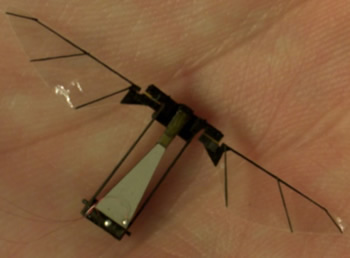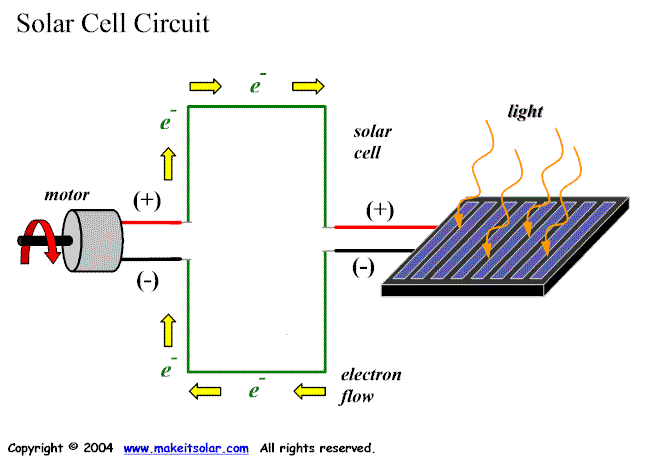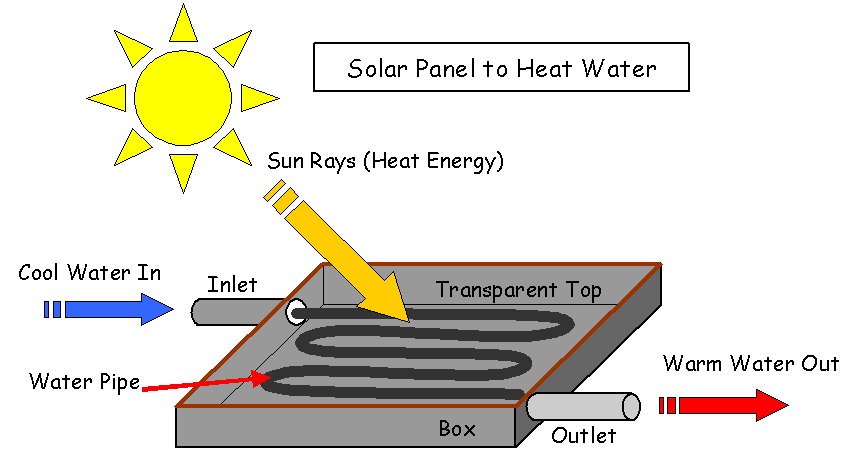Robotic Vehicle that Helps Get Rid of Land Mines
Statistics from UNICEF show that today there are more than 110 million live hand mines located in the soil worldwide. These mines were left from different conflicts that took place several decades ago.
Surely a lot of specialists are working on the issue and in order to help them the DIGGER DTR's D-3 robotic vehicle was developed.
The machine can be remotely controlled from a distance of up to 500 meters (1,640 feet), though the developers recommend controlling the machine from a distance between 50 and 300 meters.
D-3 robotic vehicle is able to trigger mines with the help of either a chain flail or tile attachment. It can trigger mines that are buried in the soil up to 25 centimeters (9.8 in). A portable blast shield was also mounted to protect the operator from flying shrapnel.
In addition, the robotic vehicle is able to clear debris using standard attachments like shovels or forks.
The entire body of the vehicle is steel-plated. The DIGGER DTR D-3 also has a V-shaped undercarriage, developed to draw away the power of explosions out to either side. Its heart is a John Deere diesel engine that generates 173 horsepower.
Its clearance rate is 1,000 square meters (10,764 square feet) per hour.
Video: ‪Digger 2 in Sudan - Video Clip (90 seconds)‬‏ - YouTube
SOurce: DIGGER DTR D-3 robot hunts for mines
DECEPTICONS?...... hehehe ayusa wui

Results 41 to 50 of 109
-
07-24-2011, 02:43 PM #41
 Re: All About Robotic and Remote-Controlled Inventions
Re: All About Robotic and Remote-Controlled Inventions
-
07-24-2011, 02:43 PM #42
 Re: All About Robotic and Remote-Controlled Inventions
Re: All About Robotic and Remote-Controlled Inventions
Remote-Controlled Robo-Skateboard from Japanese Researchers

The remote-controlled robo-skateboard was developed by engineers at the Shibaura Institute of Technology in Tokyo. The device allows a person to move smoothly around the streets.
In order to manage the speed and direction, the rider has to use his or her bodyweight. The R/C robo-skateboard is not bulky, measuring 30 x 60cm x 25cm (WLH) in dimension.
With motors and wheels on its side along with a control computer in the center, the device can reach a speed of 10km/h. It is also able to hold a weight of 80 kilograms. The skateboard itself weights around 15 kilograms, being priced at $1,000. It is expected to hit the market by 2013.
Source:
Shibaura Institute of Technology shows off 'robo-skateboard' -- Engadget
-
07-24-2011, 02:46 PM #43
 Re: All About Robotic and Remote-Controlled Inventions
Re: All About Robotic and Remote-Controlled Inventions
Researchers Turn Insects Into Remote-control Cyborg Bugs

Researchers from the University of California, Berkeley, implanted tiny neural and muscle stimulation systems into small beetles, thus obtaining the possibility to control the insects.
It is worth mentioning that at the pupal stage scientists implanted the electrodes and then linked them to remote control devices. They installed a microcontroller and a tiny battery on the dorsal thorax of each insect. The microcontroller transmits certain electrical signals through the implanted electrodes.
To create their first prototype cyborg beetle, researchers used live Coleopteran as an insect platform. By using the cyborg beetle system, researchers were able to control the insect's initiation, cessation, elevation and left/right turns during the beetle's flight.
The project is funded by the government and is expected to find a wide use in the military field, where scientists would develop military cyborg beetles that would work as spies.
-
07-24-2011, 02:49 PM #44
 Re: All About Robotic and Remote-Controlled Inventions
Re: All About Robotic and Remote-Controlled Inventions
DARPA's Remote-Controlled Cyborg Beetle Takes Flight


In January, researchers from the University of California, Berkeley, told a stunned conference audience that they had managed to create a remote-controlled cyborg beetle by attaching a computer chip to the brain of a giant insect. Now, the paper explaining how they did it has been published in the journal Frontiers In Neuroscience, and they have released a video of the cyber-bug in action.
The cyborg beetle was designed as part of a DARPA project that looks to equip insects with cameras and other sensors in an attempt to turn them into tiny, biological UAVs. The rhinoceros beetle was selected because, as one of the world's largest insects, it could carry the biggest payload.
The video below speaks for itself. Zombified with parts available at Radio Shack, the cyborg beetle flies around the room, controlled by a researcher at a laptop.
The day of military-controlled, giant cyborg insects is upon us. Someone call Godzilla, I think we're going to need some help.
Video: ‪Remote-controlled cyborg beetle‬‏ - YouTube
Source:
Video: DARPA's Remote-Controlled Cyborg Beetle Takes Flight | Popular Science
The Army's Remote-Controlled Beetle - Technology Review
-
07-24-2011, 02:53 PM #45
 Re: All About Robotic and Remote-Controlled Inventions
Re: All About Robotic and Remote-Controlled Inventions
Researchers have created a robotic fly for covert surveillance.



A life-size, robotic fly has taken flight at Harvard University. Weighing only 60 milligrams, with a wingspan of three centimeters, the tiny robot's movements are modeled on those of a real fly. While much work remains to be done on the mechanical insect, the researchers say that such small flying machines could one day be used as spies, or for detecting harmful chemicals.
"Nature makes the world's best fliers," says Robert Wood, leader of Harvard's robotic-fly project and a professor at the university's school of engineering and applied sciences.
The U.S. Defense Advanced Research Projects Agency is funding Wood's research in the hope that it will lead to stealth surveillance robots for the battlefield and urban environments. The robot's small size and fly-like appearance are critical to such missions. "You probably wouldn't notice a fly in the room, but you certainly would notice a hawk,".
Recreating a fly's efficient movements in a robot roughly the size of the real insect was difficult, however, because existing manufacturing processes couldn't be used to make the sturdy, lightweight parts required. The motors, bearings, and joints typically used for large-scale robots wouldn't work for something the size of a fly. "Simply scaling down existing macro-scale techniques will not come close to the performance that we need," Wood says.
Some extremely small parts can be made using the processes for creating microelectromechanical systems. But such processes require a lot of time and money. Wood and his colleagues at the University of California, Berkeley, needed a cheap, rapid fabrication process so they could easily produce different iterations of their designs.
Ultimately, the team developed its own fabrication process. Using laser micromachining, researchers cut thin sheets of carbon fiber into two-dimensional patterns that are accurate to a couple of micrometers. Sheets of polymer are cut using the same process. By carefully arranging the sheets of carbon fiber and polymer, the researchers are able to create functional parts.
For example, to create a flexure joint, the researchers arrange two tiny pieces of carbon composite and leave a gap in between. They then add a sheet of polymer perpendicularly across the two carbon pieces, like a tabletop on two short legs. Two new pieces of carbon fiber are placed at either end of the polymer, as a final top layer. Once all the pieces are cured together, the resulting part resembles the letter H: the center is flexible but the sides are rigid.
By fitting many little carbon-polymer pieces together, the researchers are able to create rather complicated parts that can bend and rotate precisely as required. To make parts that will move in response to electrical signals, the researchers incorporate electroactive polymers, which change shape when exposed to voltage. The entire fabrication process will be outlined in a paper appearing in an upcoming edition of the Journal of Mechanical Design.
Source: Technology Review
-
07-24-2011, 02:56 PM #46
 Re: All About Robotic and Remote-Controlled Inventions
Re: All About Robotic and Remote-Controlled Inventions
Researchers are testing whether robotic dragonflies could be agile and elusive fliers.

Scientists at the University of Ulm used a robotic dragonfly--about 10 centimeters tall--immersed in liquid to measure air forces around the dragonfly’s flapping wings. The green lines around the motor are lasers reflecting off of air bubbles, indicating the aerodynamic lift forces created by the wings.
One day, the U.S. military hopes to use tiny flying robots, equipped with cameras and sensors, for surveillance. But such robots would need to be able to navigate around obstacles, carry weight, and be efficient enough to fly for long periods of time. A group of researchers believe that the key to making such a robot might lie in the dragonfly.
Dragonflies are one of few creatures that utilize four independently controlled wings to fly, allowing them to hover, dart, glide, move backward, and change directions rapidly. Looking to understand such abilities, scientists at the Royal Veterinary College, in England, and the University of Ulm, in Germany, have developed a robotic dragonfly to measure the current flows over and under the wings at different flap cycles. While most of the dragonfly hovering scenarios were not efficient, the team found that if the lower wings are beating slightly ahead of the top wings, the double set of wings proves more efficient at generating lift, employing 22 percent less power to lift the same weight as a single pair.
"The one specific advantage you get in four wings is the maneuverability and ability to pick things out of the air and hover and dart around," says Jonathan How, a professor at MIT who works on flying robots but was not involved in the dragonfly project. "It would be really amazing if we could build something that got anywhere near that level of performance. If you can achieve the same lift at a lower power, that's helpful."
Despite their potential advantages, small flying robots that mimic dragonflies' agility have not been successfully made, in part because of the complexity of the aerodynamics around four wings, and also because of fabrication issues involved with small flying machines. However, studies of wing motion and air forces that reveal how dragonflies achieve their agility may enable roboticists to eventually build capable, swift flyers that use four wings.
To measure the air currents, the Ulm researchers immersed the robotic dragonfly in a tank filled with mineral oil and peppered with air bubbles. Two green lasers combined and reflected off the air bubbles as a high-speed camera took images 10 to 20 milliseconds apart. By comparing images, the scientists calculated the direction of flow for regions within the tank.
Source: The Flight of Dragonfly Robots - Technology Review
-
07-24-2011, 02:58 PM #47
 Re: All About Robotic and Remote-Controlled Inventions
Re: All About Robotic and Remote-Controlled Inventions
New Flying Robot from KITECH Students





A group of students from the Korea Institute of Industrial Technology (KITECH) has recently presented their latest version of a flying robot.
The presentation took place during the "World IT Show 2011" in COEX, Seoul. The show was opened from May 11th to 14th.
With the help of a built-in VTOL robot platform, which brings real-time picture data, control and managing functions, the robot was able to lift off.
It would be interesting to note that the type of recording and information transmission used in the robot can be useful in surveillance and during emergency situations as well.
All in all it is worth mentioning that such developments in technology could help perform a myriad of tasks in order to strengthen social security and thus lower the number of accidents at high risk jobs such as fire fighting.
Source: Students present their version of KITECH Flying Robot In the World IT Show
-
07-24-2011, 02:59 PM #48
 Re: All About Robotic and Remote-Controlled Inventions
Re: All About Robotic and Remote-Controlled Inventions
Roboticists Use 3D Printer to Make Wings for Robotic Insect

Three-dimensional printers are becoming more and more popular, being used to print out different objects made of glass, plastic, metal and sugar.
Recently a team of roboticists from Cornell University used 3D printers to make delicate, transparent wings for mechanical insects.
The team led by Charles Richter and Hod Lipson was able to create a flapping-wing aircraft (aka ornithopter). The aircraft weights only 3.89 grams and can stay in the air for 85 seconds. It is the lightest and currently the longest flying model researchers were able to build.
The results of their work were published in the latest issue of Artificial Life.
The article says that the developments made by the team will help roboticists understand the main mechanical principles to insect flight and control.
In the future, according to the researchers, it would be possible to create low-power micro air vehicles that would carry out such operations as mapping, surveillance and search-and-rescue.
The most difficult and time-consuming process was making the wings, which took several days to complete. It is worth mentioning that the wings are made of a thin polyester film extended over a carbon fiber frame. Three-dimensional printing allowed researchers to create all of the sophisticated components in just minutes
-
07-24-2011, 03:19 PM #49
 All About Solar Energy
All About Solar Energy

[img]http://4.bp.blogspot.com/_-RxFG9Q7LUY/Rzqf0TiaTlI/AAAAAAAAAXc/RN8DwK2FVks*******solar%2Bpower%2B-%2Bsolar%2Benergy.gif[/img]
Solar Energy is the energy from the Sun. The Sun is a big ball of heat and light resulting from nuclear fusion at its core. The nuclear reaction releases energy that travels outward to the surface of the Sun. Along the way to the surface the energy transforms so that by the time it is released it is primarily light energy. Sunlight. The two major types of solar energy that make it to Earth are heat and light.
Solar energy is often called "alternative energy" to fossil fuel energy sources such as oil and coal.
One example of our use of solar heat energy is for water heating systems. A solar panel is used to collect heat. The heat is transferred to pipes inside the solar panel and water is heated as it passes through the pipes. The hot water, heated by the Sun, can then be used for showers, cleaning, or heating your home.
We also use solar thermal energy through passive solar designs. Windows or skylights in your home can be designed to face the Sun so that they let heat into the house, keeping you warmer in the winter.
The light energy from the Sun can be transformed into electrical energy and used immediately or stored in batteries. Photovoltaic (PV) panels are the devices that convert light energy into electrical energy.
Energy changes from one Form to Another.

Solar Vehicle Ideal Energy Chain:
Light Energy >> Electrical Energy >> Mechanical Energy >> Kinetic Energy
Source: Solar Energy Science Project Topics: What is Solar Energy?
-
07-24-2011, 03:23 PM #50
 Re: All About Solar Energy
Re: All About Solar Energy
SunHope Renewable Energy


Some of solar energy’s biggest milestones are its daunting barriers to entry: traditional systems require high initial investments, large land requirements, and an in-depth installation process. The Sunhope project seeks to circumvent all of these factors by constructing low-cost photovoltaic arrays designed for vertical clearance rather than horizontal sprawl.
These solar balloons are as low-impact as power plants get, since their infrastructure is composed entirely of a control panel, a helium supply cable, and a power cable. Residential possibilities abound, as Cory and Gurfil estimate that one or two balloons would fulfill the electrical needs for one home, and they have suggested that multiple balloons can be linked together to power apartments and communities.
The design is also ideal for a multitude of off-the-grid applications, with the potential to bring power to deserts, isolated islands, ocean-bound freighters, and heavily forested landscapes. Additionally, the balloons’ eminently deployable nature makes them perfect for disaster and emergency situations, since the balloons are quick to set up and can be delivered via air.
Cory and Gurfil have constructed several prototypes and have conducted research to show that a 10 ft balloon could provide around a kilowatt of energy (equivalent to 25 square meters of solar panels). Their target cost is $4,000 per balloon, compared to the $10,000 it would cost for a solar field producing the same amount of energy. The balloons will last about a year without needing maintenance, and Cory and Gurfil are working hard to make the balloons as wind resistant as possible by experimenting with size and structure.
We’ve covered solar balloons in the past, but we were thoroughly impressed by SunHope’s low cost, high mobilization potential, and site-specific versatility.
More Pics: SOLAR BALLOONS: SunHope Renewable Energy ? Inhabitat - Green Design Will Save the World
Source: SOLAR BALLOONS: SunHope Renewable Energy | Inhabitat - Green Design Will Save the World
Advertisement
Similar Threads |
|














 Reply With Quote
Reply With Quote

